If you’re looking for an intense cardio workout that you can do in the comfort of your own home, a spin bike is a great option. With its adjustable resistance and comfortable seat, a spin bike allows you to customize your workout to your fitness level and preferences. But if you’re new to spinning, the thought of using a spin bike can be intimidating. Fortunately, it’s not as complicated as it may seem. In this blog post, we’ll go over everything you need to know about how to use a spin bike effectively so you can get the most out of your workout. So let’s strap on our cycling shoes and get ready to spin!
How to Use A Spin Bike: 10 Simple Ways
So now that we’ve covered the basics of spin bikes, let’s talk about how to use them! First things first, let’s secure our feet by clipping in. You’ll want to push your toes forward until you hear and feel the click. From there, focus on pulling up with each pedal stroke instead of just pushing down for maximum results. Remember to keep a light grip on the handlebars and maintain proper posture to avoid back pain and injury.
Once you’re on the bike, start with a 3-minute warm-up at a light to moderate pace in the saddle or third position. Don’t forget to adjust your saddle height and bike set-up for the perfect ride. And for troubleshooting, check to see if loose cables or lack of power may be causing any display malfunctions. With these tips, even beginners can confidently spin their way to a great workout!

1. Clip-In Process: How to Secure Your Feet
When it comes to using a spin bike, one important aspect is learning how to properly clip in your cycling shoes to the pedals. This is crucial for effective pedaling and preventing your feet from slipping off the pedals. As I mentioned earlier, clipless pedals, such as SPD style pedals, are typically used in spin classes. To clip in, place your lead foot in the lowest position and align the clip with the front SPD pedal.
Then, engage the front of the cleat on your shoe with the front of the pedal and press down until you hear a click. Repeat this process with your other foot. It may take some practice to get the hang of it, but once you do, you’ll notice a significant improvement in your ride. Remember to also adjust the tension on the pedals if needed to ensure a comfortable and secure fit. With proper clipping technique, you’ll be able to pedal smoothly and efficiently towards your fitness goals.
:max_bytes(150000):strip_icc()/What-is-Indoor-Cycling--Benefits-and-How-to-Get-Started-Primary-5e4eb132fb9349b0b24536881b5a7d80.jpg)
2. Effective Pedaling Techniques for Maximum Results
Now that you have clipped in and adjusted the bike to the proper height, let’s talk about effective pedaling techniques for maximum results on your spin bike. The key is to always focus on maintaining proper form and posture while pedaling. Remember to keep your knees slightly bent, and your pedal stroke should be smooth and efficient, with no bouncing or jerking movements. Avoid slumping or leaning on the handlebars, and instead, engage your core and lower back muscles to support your upper body.
Try to maintain a cadence of 90 to 100 RPM that feels comfortable, but don’t be afraid to challenge yourself over time. If you’re looking to improve your spin technique, try allocating time for high cadence drills to practice spinning without the stresses of a whole ride. By focusing on your form and technique, you can maximize your results and get the most out of your spin bike workouts.
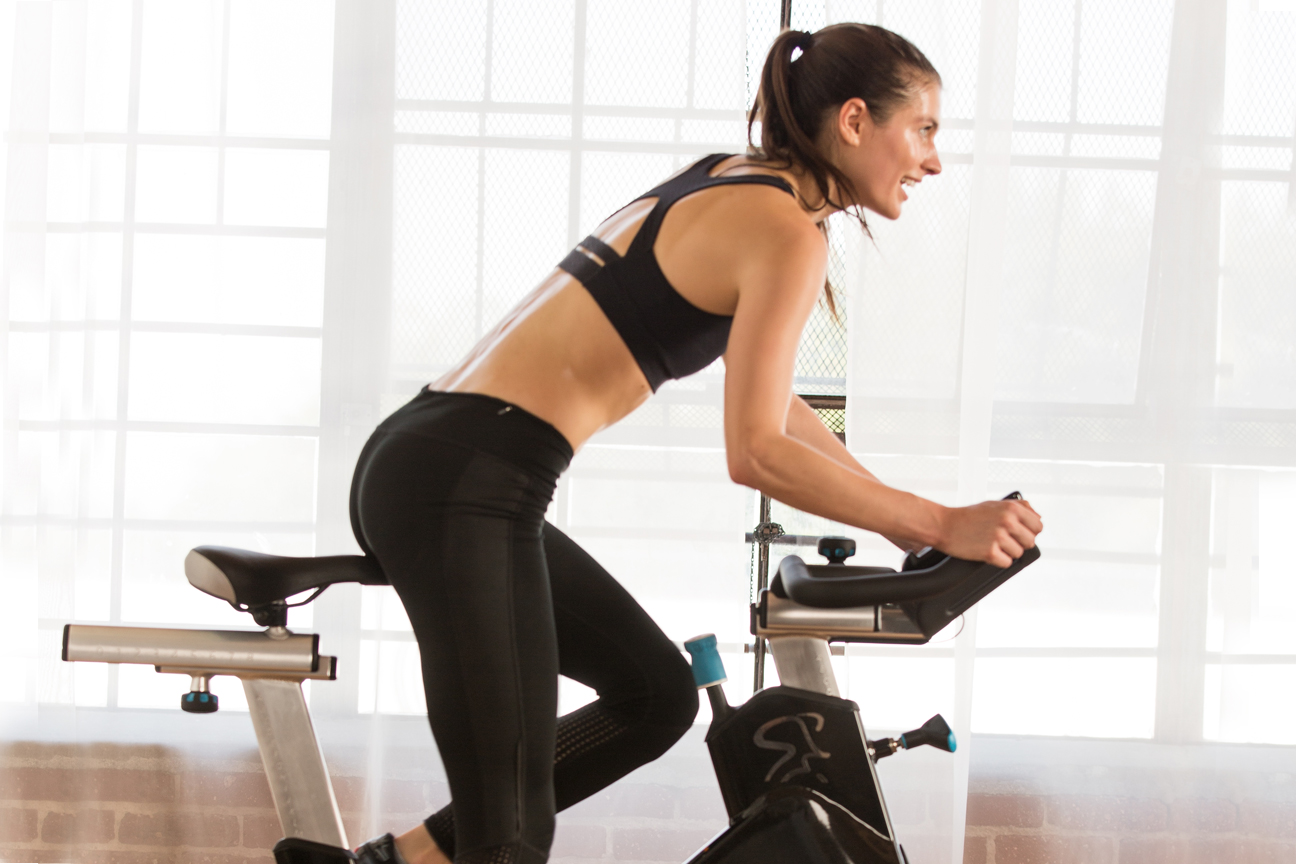
3. Proper Posture: Avoiding Back Pain and Injury
As someone who has experienced back pain from poor posture on a spin bike, I cannot stress enough the importance of proper posture during your cycling workout. To avoid injury, it’s important to maintain a straight and upright position while cycling.
This means keeping your shoulders down and your back straight, while engaging your abdominals to support your posture. Additionally, avoid leaning too far forward or backward, as this can place strain on your back and neck. By focusing on proper posture, you can prevent back pain and improve your overall performance on the spin bike.

4. Warm-Up Routine: Preparing Your Body for a Ride
Now that we’ve covered how to properly clip in, pedal, and adjust your bike, the next step is warming up your body for a successful ride. I cannot stress enough the importance of a proper warm-up routine. Not only does it prevent injury and back pain, but it also sets the tone for an effective workout. Start with some heel-toe walks and leg swings, then move on to high knee pulls and forward lunges.
Depending on your age and fitness level, your warm-up could last up to an hour. However, experts recommend 15 to 20 minutes minimum. I usually spend 10 minutes spinning at a comfortable pace to get my blood flowing before I increase the resistance and pedal at full speed for 20 seconds. Once you’ve completed your warm-up routine, you’re ready to hit the road- or the spin bike in this case. Happy riding!
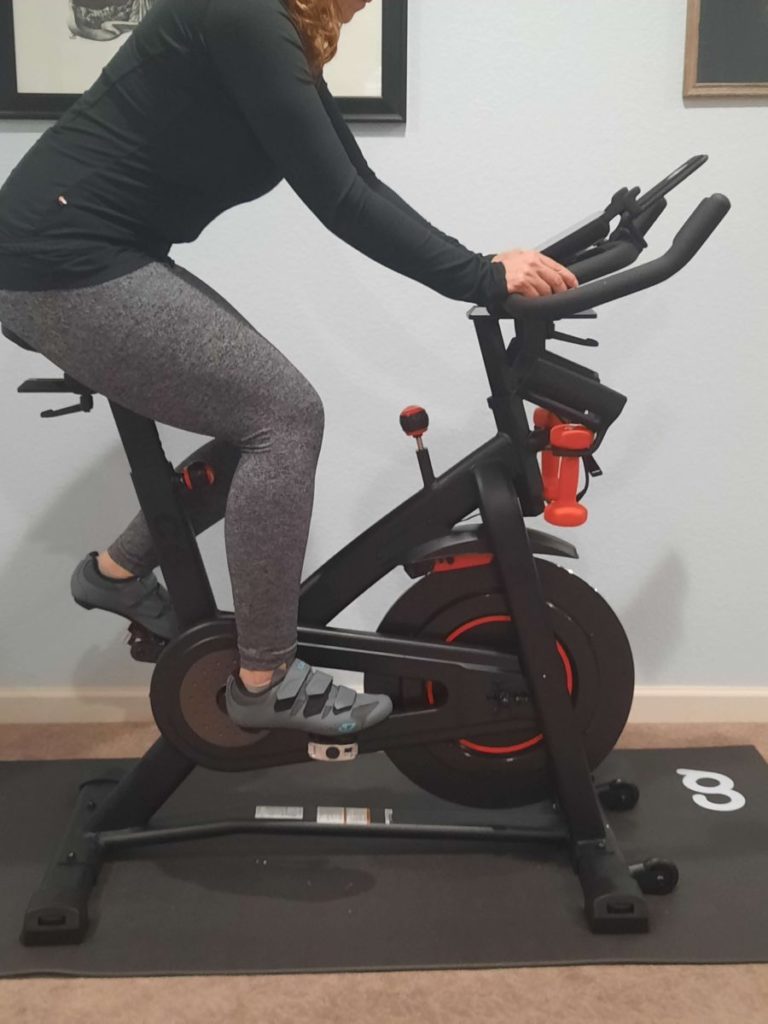
5. Saddle Adjustments: Achieving the Perfect Height
Now that we’ve discussed the clip-in process, effective pedaling techniques, proper posture, and warm-up routine, let’s dive into saddle adjustments to achieve the perfect height on your spin bike. As we mentioned earlier, adjusting your saddle height is crucial to avoid discomfort and injury during your ride. One way to determine the correct saddle height is to stand next to the bike, lift one leg to 90°, and align the top of the saddle with your hip bone.
Once on the bike, adjust the saddle up or down until your knee is directly above the pedal spindle when the pedal is at the bottom of the stroke. Don’t forget to adjust your handlebars as well by positioning them in line with your saddle or slightly higher. With your bike set up correctly, you’re ready to hit your ride with maximum efficiency and comfort.

6. Bike Set-Up: Getting Ready to Ride
Now that we’ve covered the basics, it’s time to make sure your bike is set up correctly before you hop on and start pedaling. As a spin instructor, I can’t emphasize enough how important bike setup is for an effective and safe ride. First, make sure the ball of your foot is aligned with the pedal spindle. This will ensure your power and strength are put into the pedals.
Second, adjust your seat height so it’s about even with your hipbone when your feet are flat on the ground. This will prevent discomfort and injury to your back during your workout. Finally, reach for the handles and hold the position throughout your ride. These simple adjustments will ensure you have a comfortable and effective workout. Happy spinning!
:max_bytes(150000):strip_icc()/Stocksy_txp7f75e37ePB1300_Medium_3758409-crop-c7d8160022054eb0b4fc6686719aad5b.jpg)
7. Benefits of Spinning: Primary Use and Calorie Burn
When it comes to spin classes, the benefits go beyond just burning calories. As I mentioned earlier, spinning is a low-impact cardiovascular workout that also targets multiple muscle groups, making it a great option for full-body conditioning. But what makes spinning stand out from other forms of cardiovascular exercise is its ability to rapidly burn calories – upwards of 400 to 600 in a 45-minute class, depending on your weight and intensity level.
That means you can get a lot of bang for your buck with spinning, especially if weight loss is a primary goal. Additionally, spinning can rev up your metabolism, helping you continue to burn calories even after you’ve finished your workout. As an avid spinner myself, I can attest to the benefits of spinning both for weight loss and overall fitness.
However, it’s worth keeping in mind that while spinning can help you shed pounds, it’s not the best choice for building muscle mass. If that’s a priority, incorporating strength training exercises into your routine in addition to spinning can help you achieve a more balanced fitness level.

8. Resistance Training: Building Strength on Your Spin Bike
When it comes to building strength on your spin bike, increasing resistance is key. You can adjust the resistance level on your bike to create a more challenging workout and build strength in your legs and core. Start with a moderate resistance level and gradually increase it as you become more comfortable.
Incorporating high-intensity interval training (HIIT) into your spin workouts is also a great way to build strength and improve your overall fitness levels. Remember to maintain proper form and use your legs, not your arms, to push the pedals. With consistent practice and dedication, you’ll see improvements in your strength and endurance on the spin bike.

9. Troubleshooting: Common Issues with Your Spin Bike
Now that we’ve covered the basics of using a spin bike, let’s talk about troubleshooting common issues that may arise. One of the most common problems is a noisy bike. This can be caused by a loose pedal or seat, worn pedals, or worn bearings. It’s important to check and tighten all of the parts and inspect for any worn down pieces. Another problem that may occur is the resistance not adjusting properly.
This could be due to a worn resistance knob or anything preventing the magnetic resistance from functioning correctly. Fixing the issue should get your resistance adjustment back to normal. Lastly, monitor display issues may arise, but following a troubleshooting guide can usually solve this problem. Remember, it’s important to address any issues with your spin bike as soon as possible to ensure a safe and effective workout.

10. Flywheel Weight: Why It Matters for Your Workouts
Flywheel weight is crucial when it comes to your spin bike workouts. The heavier the flywheel, the smoother your ride will be, which means less stress on your joints and muscles. Plus, it’s essential for generating resistance and allowing you to work against it. I typically recommend going for a bike with a flywheel between 18-20kgs in weight as it provides a comfortable ride while still providing a challenge.
If you’re looking to really push yourself, you can even go as high as a 50-60-pound flywheel, but keep in mind that it may be more challenging for beginners. Ultimately, the right flywheel weight for your indoor bike depends on your fitness goals and current fitness level. But trust me, getting the right flywheel weight is worth it for a productive and enjoyable spin workout.
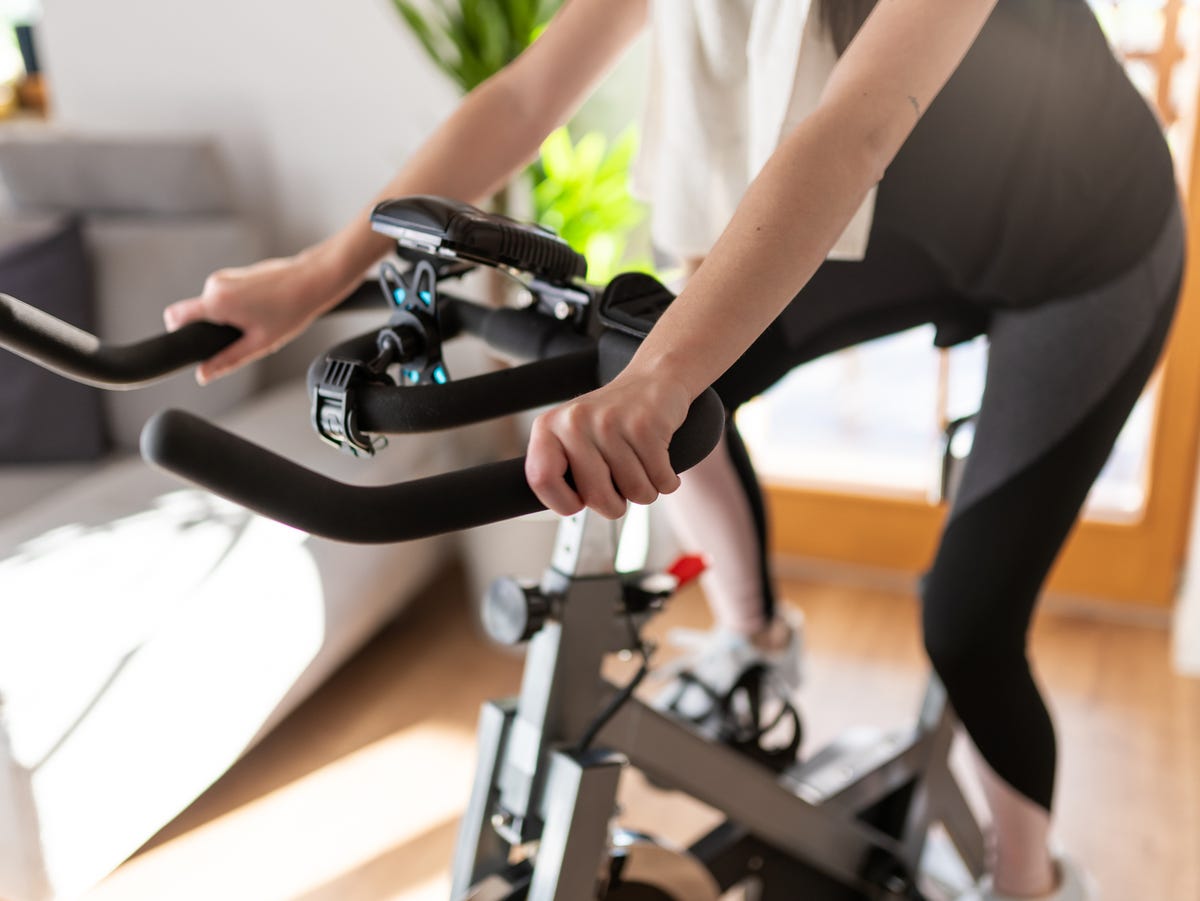
Can a beginner use a spin bike?
As a fitness enthusiast, I can confidently say that beginners can absolutely use a spin bike. In fact, indoor cycling is an excellent way for beginners to build cardiovascular endurance, burn calories, and get into shape. To start off, it’s important to find a comfortable pace and resistance that allows you to work at your own level on the rate of perceived exertion (RPE) scale.
Adjustable resistance settings make it easy to gradually increase your workout intensity as you progress. Plus, with the ability to clip-in your shoes, you can easily maintain your footing on the bike and avoid unnecessary accidents. Whether you’re a beginner or an experienced cyclist, a spin bike is a versatile piece of fitness equipment that can provide a challenging and rewarding workout. So don’t be afraid to hop on and give it a try!
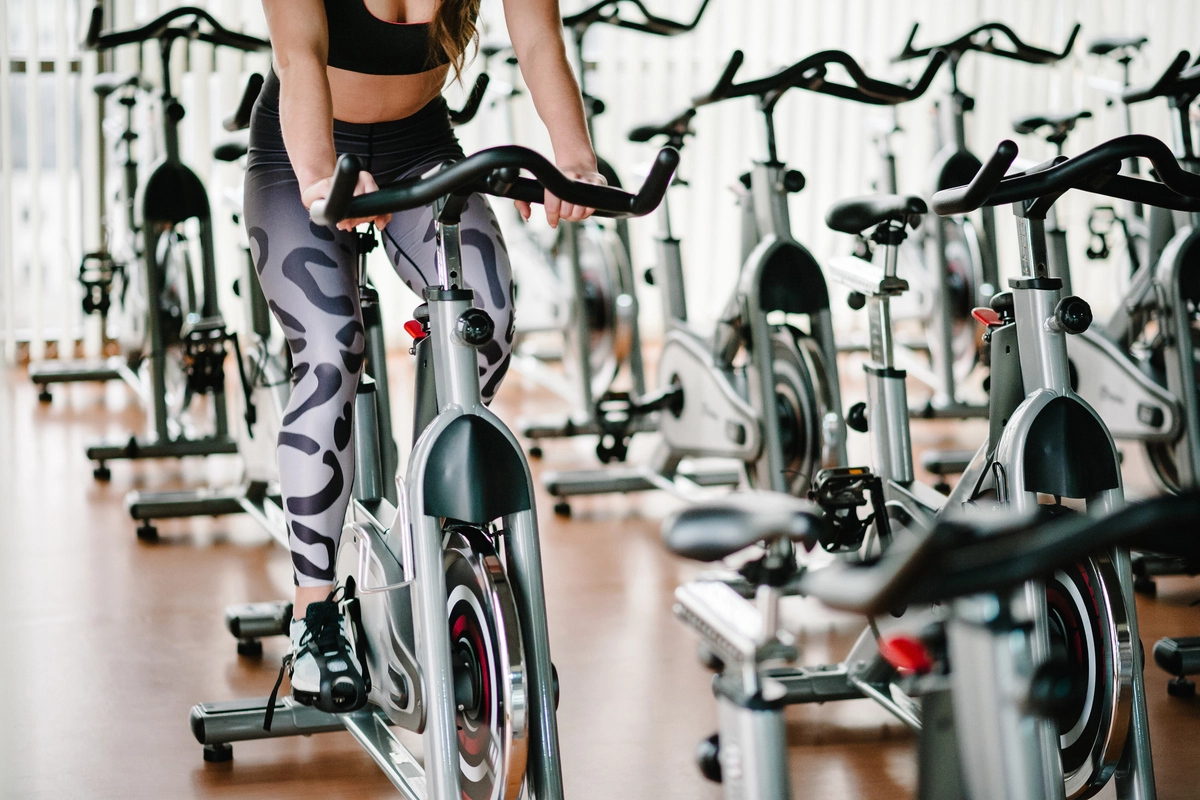
How long should a beginner use a spin bike?
As a beginner on a spin bike, it’s important not to overdo it. I recommend starting with 10-15 minutes of riding time, gradually building up to 30 minutes over the course of a few weeks. Remember to listen to your body and take breaks as needed. It’s better to start slow and steady so that you can build up your strength and endurance safely.
Once you have a solid foundation, you can start adding more resistance and intensity to your workouts. Consistency is key, so aim for at least three sessions per week. But most importantly, have fun and enjoy the ride!
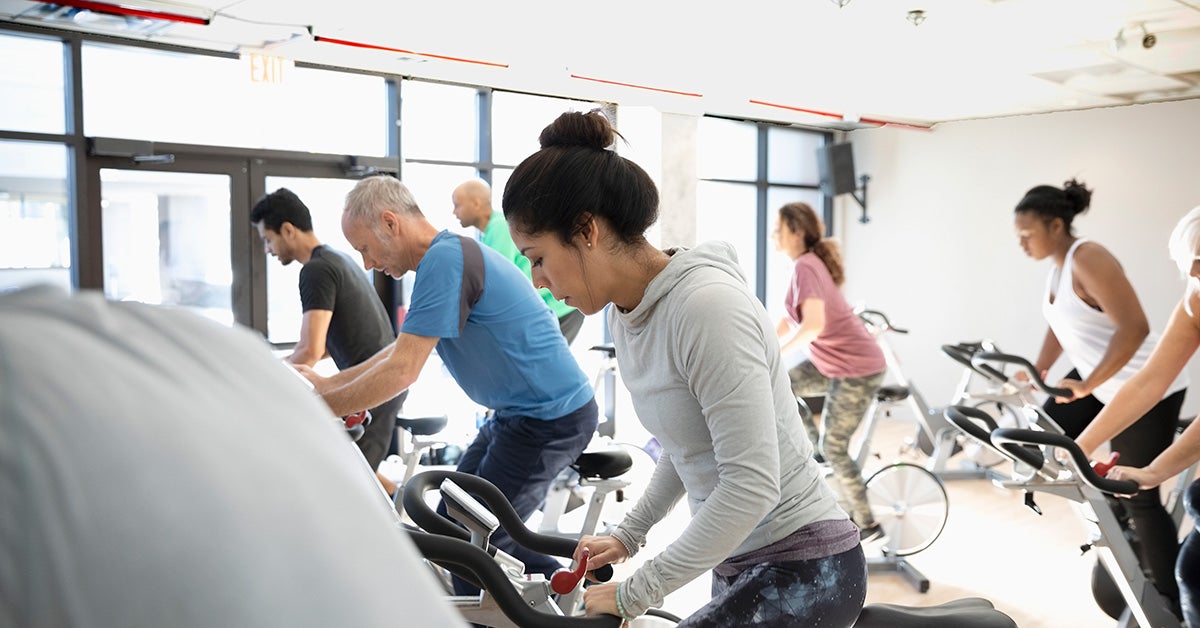
How do you spin for beginners?
As a beginner to indoor cycling, it’s important to start slow and focus on proper form to get the most out of your spin bike workout. Begin with a three-minute warmup at a moderate pace, and then make sure you’re in the correct riding position – knee over the ball of your foot at the 3 o’clock position on the pedal. Softly grip the handles and engage your core throughout your ride. Start with two classes per week, increasing to three as you progress.
For saddle adjustments, sit on the widest part of the saddle and hinge forward at the hips to reach the handlebars. Finally, clip into the pedals with a full extension and slight bend at the knee. Remember, indoor cycling is a great cardiovascular exercise routine that has many benefits, from burning calories to building strength. With a bit of practice and focus on proper form, you too can get the most out of your spin bike rides!
Summary
Overall, using a spin bike is a great way to get a full-body workout that’s low-impact and fun. In this blog, I covered the proper techniques and adjustments to make for an effective spin session. From clipping in your feet to adjusting the height of your saddle, these steps are essential for a comfortable and safe ride. I also explored the many benefits of spinning, including calorie burn and strength building. While spin classes may seem intimidating at first, anyone can start with some patience and practice. By following these tips, you’ll be on your way to a great workout in no time!